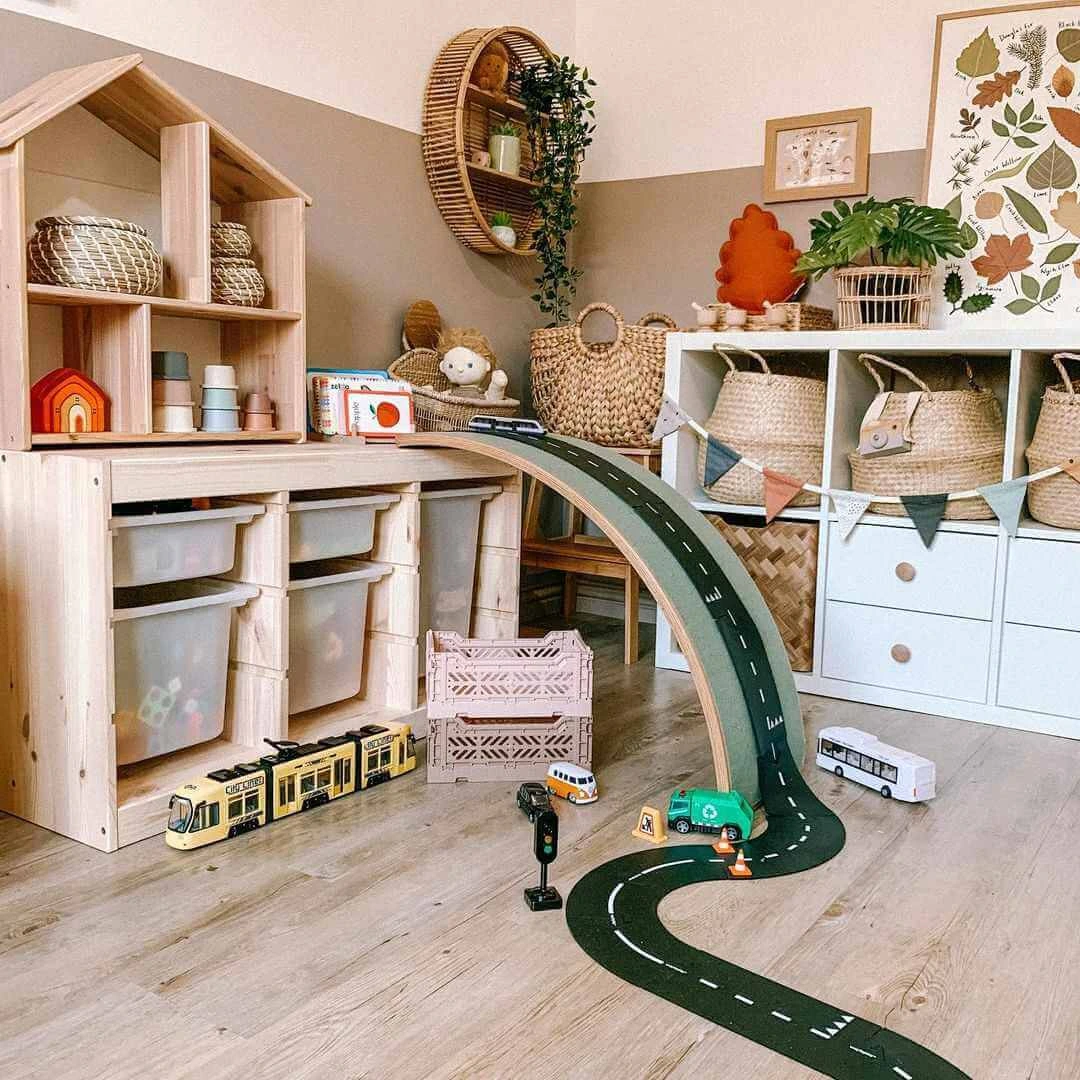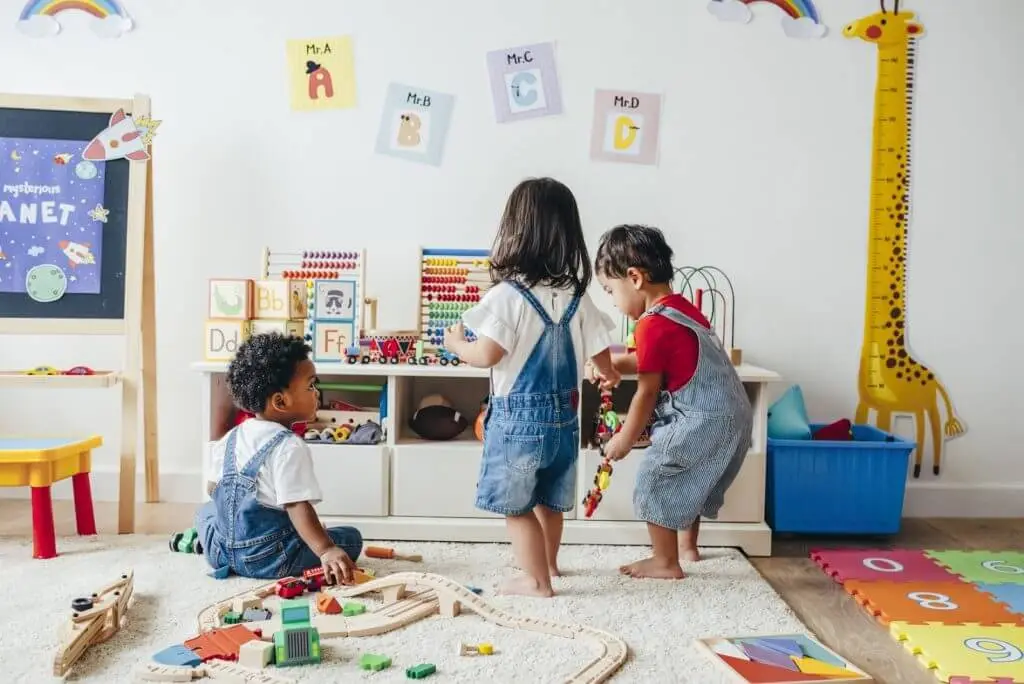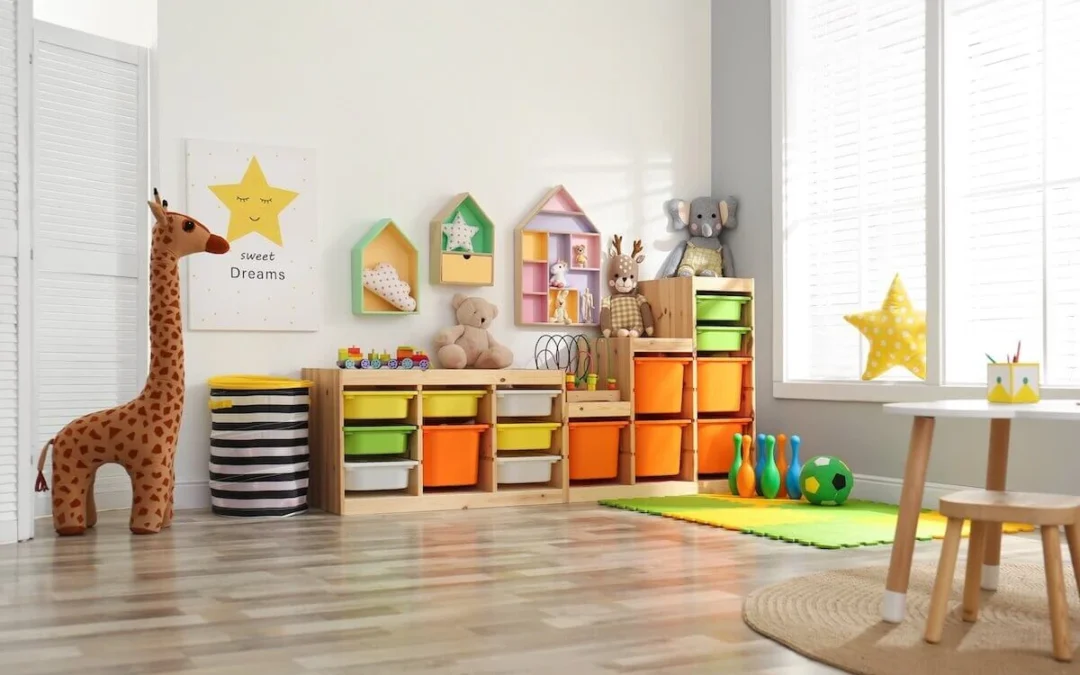Are your kids’ toys taking over your home? Do you find yourself constantly tripping over dolls, Legos, and stuffed animals? It’s time to reclaim your space and bring order to the chaos with some creative playroom organization ideas.An organized playroom is not only visually appealing, but it also has numerous benefits for both parents and children. It provides a designated space for play, promotes independence and responsibility in children, and makes clean-up a breeze. Plus, an organized playroom allows you to easily find and rotate toys, keeping your little ones engaged and excited.At Project Neat, our goal is to explore a variety of creative playroom organization ideas that will transform your chaotic play space into a functional and aesthetically pleasing area. We will delve into different styles of organization, such as theme-based, color-coded, age-based, and activity-based organization.Furthermore, we will discuss the importance of utilizing storage solutions to maximize space and keep everything in its rightful place. From using bins and baskets to incorporating shelves and bookcases, we will explore various storage options that suit your playroom needs. Additionally, we will highlight the benefits of making use of wall space and investing in creative furniture with built-in storage.If you enjoy do-it-yourself projects, we’ve got you covered! We will share DIY playroom organization ideas, including creating homemade labels, building your own storage solutions, repurposing household items for storage, and crafting creative display areas for toys. These budget-friendly ideas will not only enhance the organization of your playroom but also add a personal touch.Lastly, we will discuss the importance of maintaining an organized playroom. We will provide tips on implementing a regular cleanup routine, teaching kids to organize, regularly purging old or unused toys, and adapting the organization system as kids grow.Say goodbye to the toy clutter and hello to a beautifully organized playroom that sparks joy and creativity. Join us on this journey as we dive into the world of creative playroom organization ideas. Let’s make playtime even more enjoyable for both parents and children!
The Importance of an Organized Playroom
An organized playroom is not just about having a tidy space; it has numerous benefits for both parents and children. Whether you hire a playroom organizer or you do the work yourself, it will help your chaos and the chaos your child is surrounded by decrease exponentially. In this section, we will explore the importance of having an organized playroom and how it contributes to a positive and enriching play environment.- Promotes a Safe and Accessible Space: An organized playroom ensures that toys and materials are stored in a way that minimizes the risk of accidents. By having a designated place for everything, children can easily find and access their toys without creating a mess or potentially hurting themselves.
- Fosters Independence and Responsibility: When children have an organized playroom, they learn to take responsibility for their belongings. They understand the importance of putting toys back in their designated spots after playtime, promoting a sense of ownership and accountability.
- Enhances Creativity and Imagination: An organized playroom provides a conducive environment for creativity and imaginative play. With toys neatly organized and easily accessible, children can effortlessly explore different play themes and engage in imaginative play scenarios.
- Encourages Extended Playtime: When toys are well-organized, children are more likely to engage in extended play sessions. They spend less time searching for specific toys and more time actively playing and exploring different activities. This extended playtime can lead to enhanced cognitive development and improved focus.
- Saves Time and Reduces Stress: An organized playroom saves parents valuable time and reduces stress. With a clear system in place, it becomes easier to find and retrieve toys, eliminating the frustration of searching through clutter. Additionally, clean-up becomes a more streamlined process, allowing parents to spend more quality time with their children.
- Teaches Organization Skills: An organized playroom serves as a valuable teaching tool for children to learn organization skills from an early age. They develop the ability to categorize and sort toys, practice spatial awareness, and understand the importance of keeping their play area tidy.
- Creates a Positive and Calming Environment: A well-organized playroom contributes to a positive and calming environment for both children and parents. A clutter-free space promotes a sense of calmness, reduces overstimulation, and allows children to focus and engage in play without distractions.
Different Styles of Playroom Organization
When it comes to organizing a playroom, there are various styles and approaches to consider. In this section, we will explore different styles of playroom organization that can help you create a functional and visually appealing space for your children. Whether you prefer a themed playroom, a color-coded system, an age-based organization, or an activity-based approach, there’s a style that will suit your preferences and needs.- Theme-Based Organization: This style of playroom organization revolves around a specific theme or interest. For example, you can create a playroom centered around a favorite character, such as superheroes, princesses, or animals. By incorporating themed storage bins, wall decals, and play furniture, you can create a cohesive and immersive play environment that sparks your child’s imagination.
- Color-Coded Organization: If you prefer a visually appealing and organized playroom, a color-coded system might be the perfect choice. Assign each category of toys or materials a specific color and use matching storage containers or labels. For instance, you can designate blue for building blocks, red for art supplies, and green for board games. This system not only looks aesthetically pleasing but also makes it easy for children to identify and return toys to their designated spots.
- Age-Based Organization: An age-based organization system involves separating toys and materials according to the appropriate age group. Create designated areas or shelves for specific age ranges, such as a toddler area, preschool area, and school-age area. This style ensures that toys are easily accessible and suitable for each child’s developmental stage, promoting age-appropriate play and preventing younger children from accessing small parts.
- Activity-Based Organization: This style of organization focuses on grouping toys and materials based on different activities or play types. For example, you can create separate zones for arts and crafts, building blocks, pretend play, and puzzles. This approach allows children to easily find the toys they want to engage with and encourages them to explore different play activities.

Utilizing Storage Solutions for Playroom Organization
In order to maintain an organized playroom, it is essential to have effective storage solutions in place. This section will explore various storage options and techniques that will help you maximize space, keep toys and materials organized, and create a clutter-free play area. From using bins and baskets to incorporating shelves and bookcases, we will discuss different ways to optimize storage in your playroom.- Using Bins and Baskets: Bins and baskets are versatile storage solutions that can hold a variety of toys and materials. They come in different sizes, shapes, and materials, allowing you to choose options that suit your playroom’s aesthetics and needs. Stackable plastic bins or collapsible fabric baskets are popular choices. Label each bin or basket to make it easier for both children and adults to identify and return toys to their designated places.
- Incorporating Shelves and Bookcases: Shelves and bookcases provide vertical storage space, making them ideal for displaying books, toys, and decorative items. Adjustable shelves allow you to customize the height and spacing according to the size of your toys and storage needs. Consider using clear bins or baskets on the shelves to create a visually appealing and organized display. Additionally, you can use the top of bookcases as additional storage space or display areas.
- Making Use of Wall Space: Utilizing wall space is a smart way to save floor space and keep the playroom organized. Install wall-mounted shelves, cubbies, or hanging organizers to store smaller toys, art supplies, or even dress-up costumes. Magnetic boards or pegboards are also great options for displaying and organizing small items like puzzles, building blocks, or art materials. Don’t forget to take advantage of the back of doors by attaching hanging organizers or hooks for additional storage.
- Creative Furniture with Built-in Storage: When selecting furniture for your playroom, look for pieces that offer built-in storage options. For example, choose a toy box or ottoman with hidden storage compartments, a play table with drawers or shelves underneath, or a bench with built-in cubbies. These furniture pieces not only provide seating or play surfaces but also offer convenient storage solutions for toys and other items.
DIY Playroom Organization Ideas
If you enjoy do-it-yourself projects, you can add a personal touch to your playroom organization by incorporating DIY ideas. Not only are these projects budget-friendly, but they also allow you to customize your storage solutions to fit the specific needs and style of your playroom. In this section, we will explore various DIY playroom organization ideas that you can easily implement.- Creating Homemade Labels: Labeling is an essential aspect of playroom organization, and you can make it fun and personalized by creating your own labels. Use colorful cardstock, adhesive labels, or even repurpose old picture frames to create visually appealing labels for toy bins, shelves, or drawers. Include both text and pictures to help young children identify and return toys to their designated spots independently.
- Building Your Own Storage Solutions: If you have basic woodworking skills, building your own storage solutions can be a rewarding DIY project. Construct wooden crates, cubbies, or toy boxes to fit your specific storage needs. You can customize the size, shape, and finish to match your playroom’s aesthetics. These handmade storage solutions not only provide ample space for toys but also add a unique and rustic charm to the room.
- Repurposing Household Items for Storage: Look around your home for unused or underutilized items that can be repurposed for playroom storage. For example, repurpose a hanging shoe organizer to hold art supplies or small toys. Use mason jars or empty baby food jars to store and display small items like beads or buttons. Transform an old ladder into a bookshelf by adding shelves between the rungs. Get creative and think outside the box to repurpose items in unique ways.
- Crafting Creative Display Areas for Toys: Showcase your children’s favorite toys while keeping them organized by creating creative display areas. Build a wall-mounted Lego display board using baseplates and picture frames. Install a magnetic board on the wall to display and organize metal toy cars or magnetic building blocks. Hang a rope ladder from the ceiling to create a unique and fun stuffed animal storage solution. These DIY display areas not only provide storage but also add visual interest to the playroom.
Maintaining an Organized Playroom
Maintaining an organized playroom is key to ensuring that the space remains functional and clutter-free. In this section, we will explore essential tips and strategies for keeping your playroom organized on an ongoing basis. From implementing a regular cleanup routine to teaching kids to organize, these practices will help you maintain a well-organized playroom for years to come.- Implementing a Regular Cleanup Routine: Set a specific time each day or week for a playroom cleanup session. Encourage your children to participate in the cleanup process by making it a fun activity. Set a timer, play upbeat music, or turn it into a game. Teach them to put toys back in their designated spots, tidy up art supplies, and return books to shelves. By making cleanup a routine, you instill good habits and keep the playroom organized in the long run.
- Teaching Kids to Organize: Teaching your children organizational skills from an early age is essential for maintaining an organized playroom. Show them how to sort toys into categories, such as dolls, cars, puzzles, or building blocks. Teach them to use labels or pictures to identify where toys belong. Provide guidance and support as they learn to put toys away independently. By involving them in the organization process, you empower them to take ownership of their play space.
- Regularly Purging Old or Unused Toys: Periodically go through the toys in the playroom and identify items that are no longer played with or have been outgrown. Set aside these toys for donation or storage in rotation bins. Regularly purging old or unused toys not only declutters the space but also allows for new toys and materials to be introduced. Involve your children in the process and explain the concept of sharing with others.
- Adapting the Organization System as Kids Grow: As your children grow, their play preferences and toy collections will change. It’s important to adapt the organization system accordingly. Reassess the storage solutions, labels, and layout of the playroom to accommodate their evolving needs. Consider introducing new storage options or rearranging furniture to optimize space. By adapting the organization system, you ensure that the playroom remains functional and organized as your children continue to grow and explore different play activities.

By implementing these strategies to maintain an organized playroom, you create an environment that fosters independence, creativity, and enjoyment for your children. Regular cleanup routines, teaching organizational skills, purging old toys, and adapting the organization system are all essential practices that will help you keep the playroom organized and functional for years to come.
Enjoy the benefits of a well-organized playroom and make playtime even more enjoyable for both parents and children. For more creative playroom organization ideas, contact Project Neat today!

